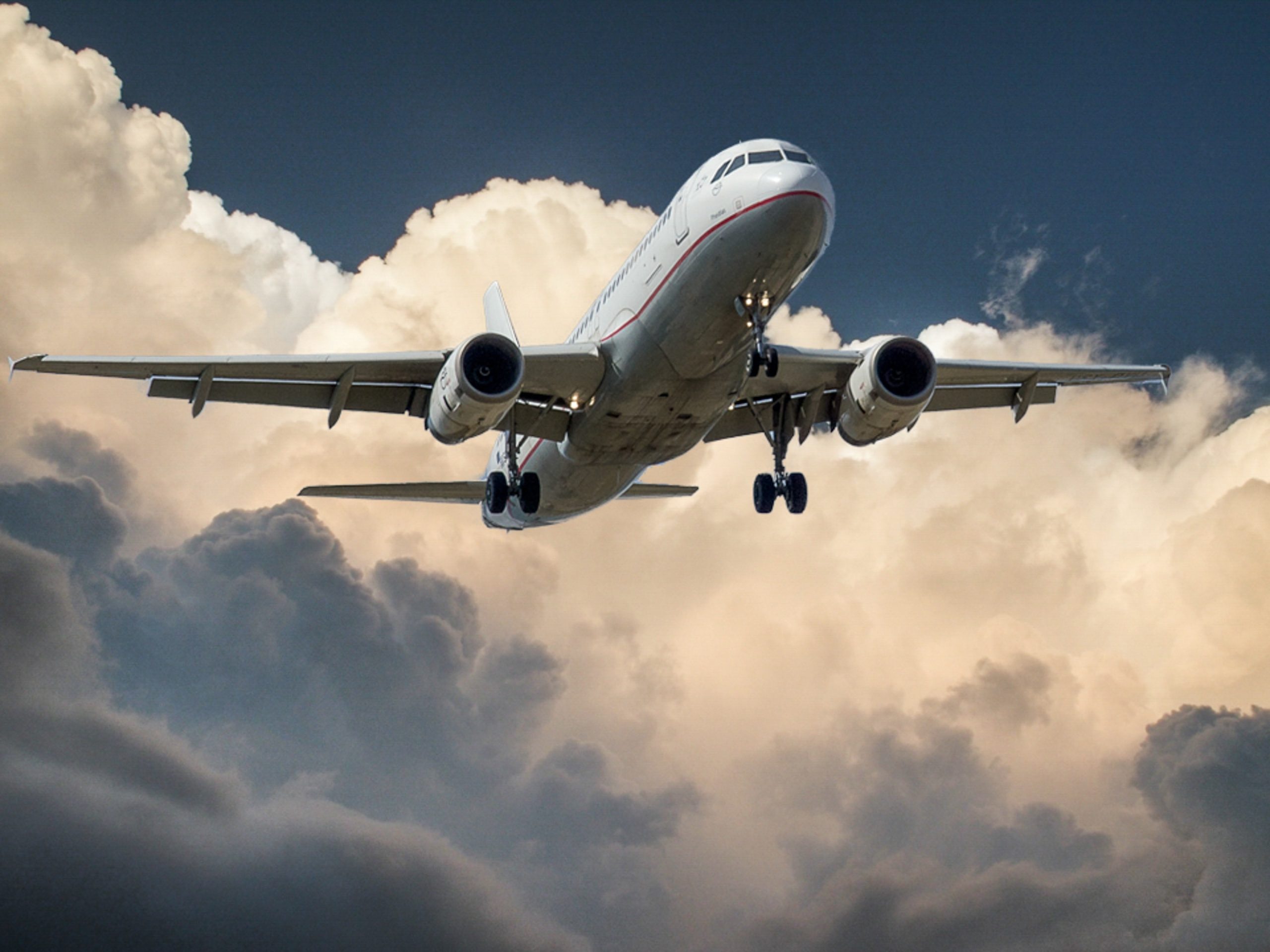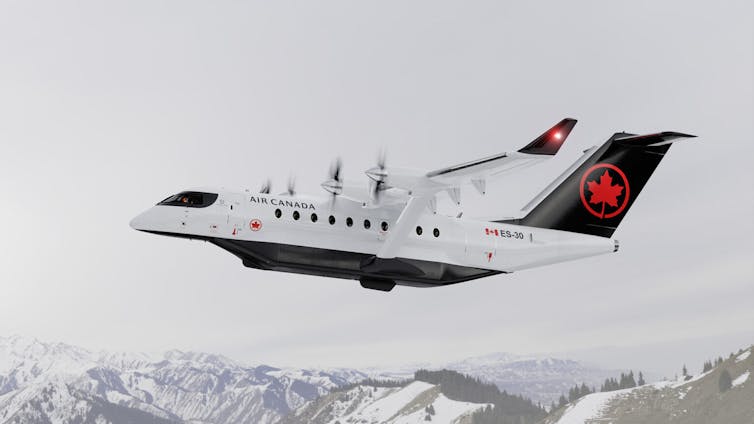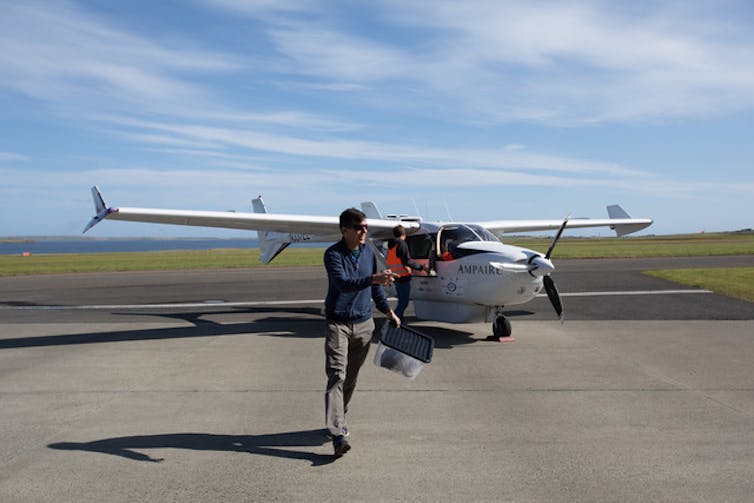Business and Economy
Electric planes are coming: Short-hop regional flights could be running on batteries in a few years

New batteries are being developed, but they aren’t yet ready for aircraft. (Pexels Photo)
Electric planes might seem futuristic, but they aren’t that far off, at least for short hops.
Two-seater Velis Electros are already quietly buzzing around Europe, electric sea planes are being tested in British Columbia, and larger planes are coming. Air Canada announced on Sept. 15, 2022, that it would buy 30 electric-hybrid regional aircraft from Sweden’s Heart Aerospace, which expects to have its 30-seat plane in service by 2028. Analysts at the U.S. National Renewable Energy Lab note that the first hybrid electric 50- to 70-seat commuter plane could be ready not long after that. In the 2030s, they say, electric aviation could really take off.
That matters for managing climate change. About 3% of global emissions come from aviation today, and with more passengers and flights expected as the population expands, aviation could be producing three to five times more carbon dioxide emissions by 2050 than it did before the COVID-19 pandemic.
Aerospace engineer and assistant professor Gökçin Çınar develops sustainable aviation concepts, including hybrid-electric planes and hydrogen fuel alternatives, at the University of Michigan. We asked her about the key ways to cut aviation emissions today and where technologies like electrification and hydrogen are headed.
Why is aviation so difficult to electrify?
Aircraft are some of the most complex vehicles out there, but the biggest problem for electrifying them is the battery weight.
If you tried to fully electrify a 737 with today’s batteries, you would have to take out all the passengers and cargo and fill that space with batteries just to fly for under an hour.
Jet fuel can hold about 50 times more energy compared to batteries per unit mass. So, you can have 1 pound of jet fuel or 50 pounds of batteries. To close that gap, we need to either make lithium-ion batteries lighter or develop new batteries that hold more energy. New batteries are being developed, but they aren’t yet ready for aircraft.

Heart Aerospace
An electric alternative is hybrids.
Even though we might not be able to fully electrify a 737, we can get some fuel burn benefits from batteries in the larger jets by using hybrid propulsion systems. We are trying to make that happen in the short term, with a 2030-2035 target for smaller regional planes. The less fuel burned during flight, the fewer greenhouse gas emissions.
How does hybrid aviation work to cut emissions?
Hybrid electric aircraft are similar to hybrid electric cars in that they use a combination of batteries and aviation fuels. The problem is that no other industry has the weight limitations that we do in the aerospace industry.
That’s why we have to be very smart about how and how much we are hybridizing the propulsion system.
Using batteries as a power assist during takeoff and climb are very promising options. Taxiing to the runway using just electric power could also save a significant amount of fuel and reduce the local emissions at airports. There is a sweet spot between the added weight of the battery and how much electricity you can use to get net fuel benefits. This optimization problem is at the center of my research.
Hybrids would still burn fuel during flight, but it could be considerably less than just relying entirely on jet fuel.
I see hybridization as a mid-term option for larger jets, but a near-term solution for regional aircraft.
For 2030 to 2035, we’re focused on hybrid turboprops, typically regional aircraft with 50-80 passengers or used for freight. These hybrids could cut fuel use by about 10%.
With electric hybrids, airlines could also make more use of regional airports, reducing congestion and time larger planes spend idling on the runway.
What do you expect to see in the near term from sustainable aviation?
Shorter term we’ll see more use of sustainable aviation fuels, or SAF. With today’s engines, you can dump sustainable aviation fuel into the same fuel tank and burn it. Fuels made from corn, oilseeds, algae and other fats are already being used.
Sustainable aviation fuels can reduce an aircraft’s net carbon dioxide emissions by around 80%, but supply is limited, and using more biomass for fuel could compete with food production and lead to deforestation.
A second option is using synthetic sustainable aviation fuels, which involves capturing carbon from the air or other industrial processes and synthesizing it with hydrogen. But that’s a complex and costly process and does not have a high production scale yet.

Ampaire
Airlines can also optimize their operations in the short term, such as route planning to avoid flying nearly empty planes. That can also reduce emissions.
Is hydrogen an option for aviation?
Hydrogen fuel has been around a very long time, and when it’s green hydrogen – produced with water and electrolysis powered by renewable energy – it doesn’t produce carbon dioxide. It can also hold more energy per unit of mass than batteries.
There are two ways to use hydrogen in an airplane: either in place of regular jet fuel in an engine, or combined with oxygen to power hydrogen fuel cells, which then generate electricity to power the aircraft.
The problem is volume – hydrogen gas takes up a lot of space. That’s why engineers are looking at methods like keeping it very cool so it can be stored as liquid until it’s burned as a gas. It still takes up more space than jet fuel, and the storage tanks are heavy, so how to store, handle or distribute it on aircraft is still being worked out.
Airbus is doing a lot of research on hydrogen combustion using modified gas turbine engines with an A380 platform, and aiming to have mature technology by 2025. Australia’s Rex airline expects to start testing a 34-seat, hydrogen-electric airplane for short hops in the next few years.
Due to the variety of options, I see hydrogen as one of the key technologies for sustainable aviation.
Will these technologies be able to meet the aviation industry’s goals for reducing emissions?
The problem with aviation emissions isn’t their current levels – it’s the fear that their emissions will increase rapidly as demand increases. By 2050, we could see three to five times more carbon dioxide emissions from aviation than before the pandemic.
The International Civil Aviation Organization, a United Nations agency, generally defines the industry’s goals, looking at what’s feasible and how aviation can push the boundaries.
Its long-term goal is to cut net carbon dioxide emissions 50% by 2050 compared with 2005 levels. Getting there will require a mix of different technologies and optimization. I don’t know if we’re going to be able to reach it by 2050, but I believe we must do everything we can to make future aviation environmentally sustainable.![]()
Gökçin Çınar, Assistant Professor of Aerospace Engineering, University of Michigan
This article is republished from The Conversation under a Creative Commons license. Read the original article.





















